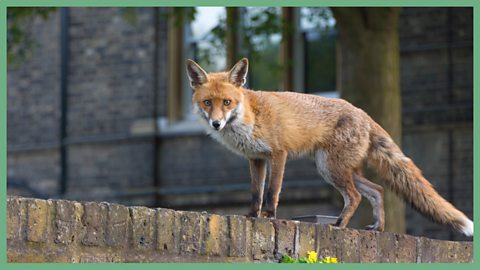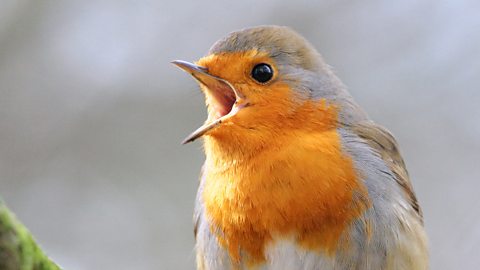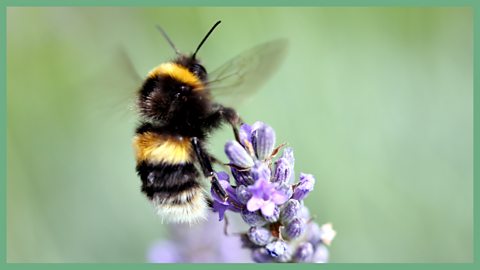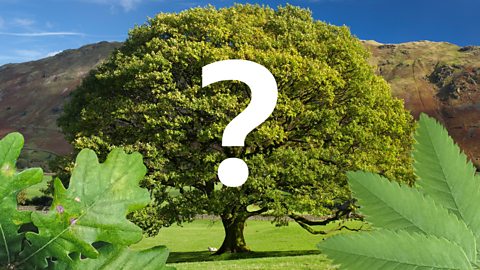In the countryside, there is always wildlife to discover - you just have to know which signs and tracks to look for. Get outside and find out more about the secret citizens of our fields and forests!
Share this guide, created in partnership with , with your child to help them learn about the kinds of wildlife that live in the UK.

Top tracking tips
There are lots of signs that your child can learn to look for that reveal some of the wildlife living in our country. Here are just a few tips to get them started - tick off the signs you can see on your family adventure!
Tip 1
Always remember to take a look in soft mud, sand, or snow when you're on a walk. These are the best places to find footprints! Your child can draw any footprints they find and, once you're home, try to research what animal it could be together.

Tip 2
When an owl has eaten their prey - often a mouse, shrew, or vole - they spit out a brownish pellet full of the parts of the animal they can't digest - like fur and bones. If you spot one, then you know you're in an owl's hunting ground.

Tip 3
If you start seeing pine cones that have been stripped down to their core, look up into the trees around you, as you're more than likely in the company of squirrels. Hungry squirrels love pine cones!

Tip 4
Look for molehills the next time you are in a field or park. They're a sure sign that a mole or vole is building, expanding, or repairing their underground burrow.

Tip 5
You can tell the difference between a slug and a snail just by their slimy trail! Slugs leave unbroken trails, whereas snails leave trails that stop and start. Follow one and seeÔÇŽ

Tip 6
The best places to find rabbit holes are under hedges and on the sides of slopes. These often lead to a system of tunnels called a warren, where as many as ten rabbits can live.

Tip 7
Birds shed their feathers naturally when they are damaged or worn out. If you find one, do some research and see if you can find out which bird it belonged to, based on colour, size and shape.

Tip 8
Long grass can sometimes reveal if a larger animal has been about, as they flatten the grass in their path. This could be a badger, a fox, a deer (such as a muntjac deer), or grazing livestock like sheep.

Tip 9
Keep a keen eye on fences as you walk along, as an animal's fur can often get caught as they rub against it or try to scrabble through. Can your child guess what the animal was, or where it was going - perhaps to a nearby wood? Always take care around barbed wire!

Tip 10
A great way to tell if a hedgehog has been around is by their droppings. Hedgehog droppings are small - only a few centimetres long - sausage-shaped and usually dark in colour. You might also be able to spot small shiny bits of beetle, which make up a lot of the hedgehog's diet.

Tip 11
Remember to look in the trees for bird nests. It can be difficult to spot a small bundle of twigs in higher branches, especially during the summer when there are lots of leaves, but you can also look for an adult bird returning to the same spot again and again, or listen out for the cheeping of hungry fledglings.

Tip 12
Lots of birds love to eat snails, but the shell can be a tricky obstacle to get around. Luckily, the song thrush is an expert at breaking these shells on hard objects, like doorsteps or large stones, to get a tasty meal, so if you spot broken shells, listen out for a song thrush. You can learn about their song, as well as the songs of other birds, here.


Urban wildlife to spot

If your family lives in a town or city and can't get out to the countryside, don't worry! There are still plenty of animals to track that call our urban areas home. How many can your child spot from this list?
Grey squirrels
Often found scampering in our city parks or visiting our garden bird feeders, grey squirrels were only introduced to the UK in the 1800s, but are now much more common than the native red squirrel, whose numbers have fallen rapidly since.
House sparrows
These adaptable birds are among the most widespread in the world. They live in colonies and commonly nest inside the crevices of buildings or in thick hedgerows.
Feral pigeons
Our most familiar urban bird, feral pigeons are the descendants of domesticated rock doves, which were kept by humans for thousands of years as a food supply. They now thrive in our city centres, making the most of what we leave behind.
Peregrine falcons
Believe it or not, the world's fastest animal has made a home in our towns and cities, often roosting at the top of tall buildings, which resemble its natural nesting environment on the side of cliffs.
Foxes
Red foxes are the UK's only wild species of dog. You might be familiar with their calling late at night - the males make a barking noise and the females make a terrifying shriek!
Hedgehogs
A nocturnal visitor to our gardens, the hedgehog spends most of its time sniffing out and crunching on bugs which would otherwise be eating potted plants and vegetable patches - so they are well loved by green-fingered humans.
Blackbirds
Blackbirds are a great starting point for bird-spotters, as the male's black body and bright yellow beak are hard to miss. Keep an eye out for the females in dark brown too! You can learn about their song, as well as the songs of other birds, here.
Starlings
During the winter, starlings come together from miles around to form huge flocks which can reach more than a million birds. The synchronised diving and soaring is a spectacular sight in the sky above our towns!
7-spot ladybirds
If your ladybird has got a red back with seven black spots, it's a 7-spot ladybird - easy! Did you know: ladybirds wear bright colours to warn any potential predators that they don't taste very nice. That vibrant red is them saying 'don't eat me!'
Tree bumblebees
Tree bumblebees can be identified by their dark orange thorax, their black abdomen, and their white tail. They're a new species of bee in the UK, with first sightings recorded in 2001!

care for 2,300 nature reserves all over the UK, providing inspiration and education about the natural world. They also work with others to manage their land with nature. Their collection has plenty more nature activities for families to try.
Illustrations by Corinne Welch

More from ┬ÚÂ╣ď╝┼─ Bitesize Parents' ToolkitÔÇŽ
Parents' Toolkit
Fun activities, real-life stories, wellbeing support and loads of helpful advice - we're here for you and your child.

Personality quiz: Which minibeast are you?
"Am I a worm or a woodlouse?" If you've ever asked yourself this question, this is the quiz for you.

Megan McCubbin: How to spot UK wildlife this summer
Springwatch presenter and zoologist Megan McCubbin has advice for families to discover the amazing wildlife that call this country home.

Quiz: Learn to spot UK birds using their songs
Help your child learn how to identify British garden and woodland birds from their songs and appearance.

Hunt for minibeasts and make a bug pooter
Strange creatures can be found everywhere in the fields and forests of the UK, you've just got to know where to look!

Quiz: Can you identify a tree by its leaves?
Do you know your oak from your yew? Turn over a new leaf and learn about trees!
